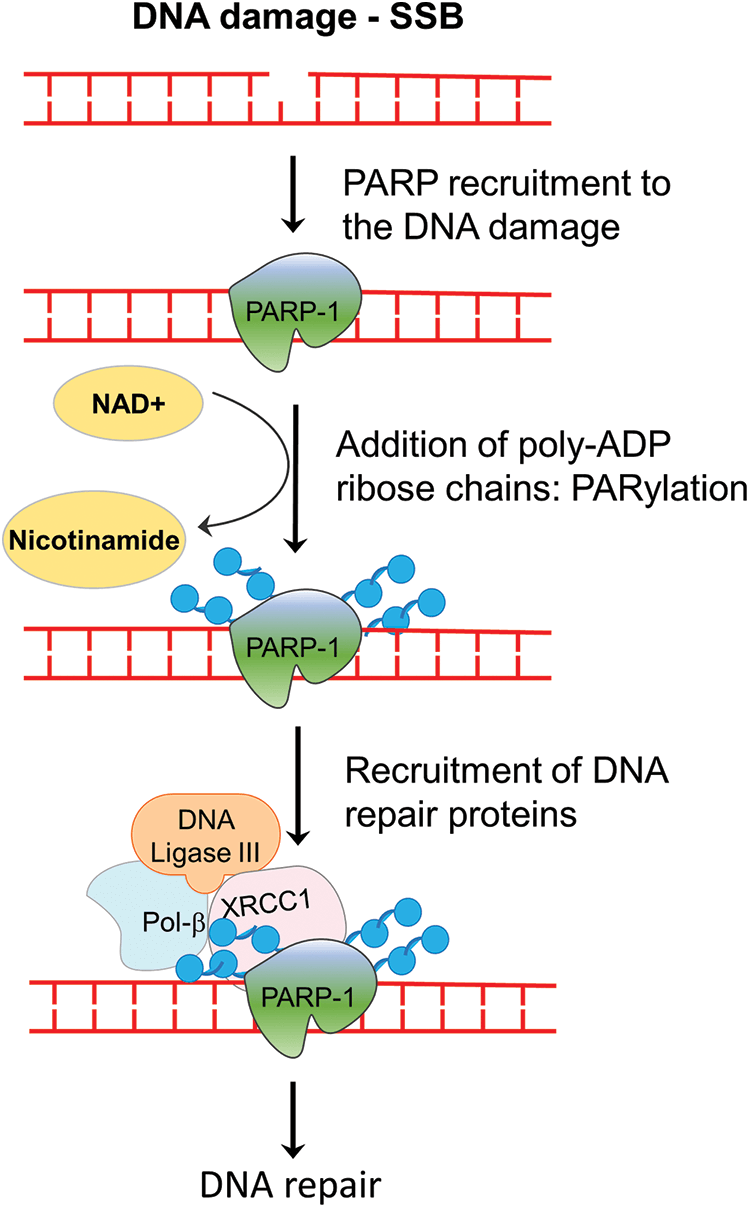 Open Access
Open Access
REVIEW
Targeting DNA repair for cancer treatment: Lessons from PARP inhibitor trials
1 Department of Radiation Oncology, Stanford University School of Medicine, Stanford, CA, 94305, USA
2 Cancer Biology Laboratory, School of Life Sciences, Jawaharlal Nehru University, New Delhi, 110067, India
3 Special Centre for Systems Medicine, Jawaharlal Nehru University, New Delhi, 10067, India
* Corresponding Author: RANA P. SINGH. Email:
Oncology Research 2023, 31(4), 405-421. https://doi.org/10.32604/or.2023.028310
Received 11 December 2022; Accepted 21 March 2023; Issue published 25 June 2023
Abstract
Ionizing radiation is frequently used to treat solid tumors, as it causes DNA damage and kill cancer cells. However, damaged DNA is repaired involving poly-(ADP-ribose) polymerase-1 (PARP-1) causing resistance to radiation therapy. Thus, PARP-1 represents an important target in multiple cancer types, including prostate cancer. PARP is a nuclear enzyme essential for single-strand DNA breaks repair. Inhibiting PARP-1 is lethal in a wide range of cancer cells that lack the homologous recombination repair (HR) pathway. This article provides a concise and simplified overview of the development of PARP inhibitors in the laboratory and their clinical applications. We focused on the use of PARP inhibitors in various cancers, including prostate cancer. We also discussed some of the underlying principles and challenges that may affect the clinical efficacy of PARP inhibitors.Graphic Abstract

Keywords
Cite This Article
 Copyright © 2023 The Author(s). Published by Tech Science Press.
Copyright © 2023 The Author(s). Published by Tech Science Press.This work is licensed under a Creative Commons Attribution 4.0 International License , which permits unrestricted use, distribution, and reproduction in any medium, provided the original work is properly cited.


 Submit a Paper
Submit a Paper Propose a Special lssue
Propose a Special lssue View Full Text
View Full Text Download PDF
Download PDF Downloads
Downloads
 Citation Tools
Citation Tools
